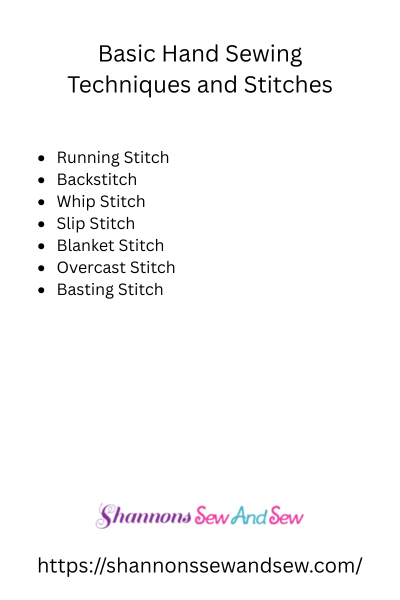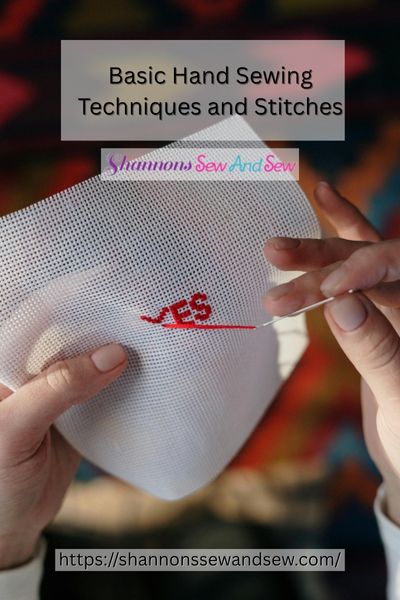Hand Sewing
Basic Hand Sewing Techniques and Stitches
So, you’ve got a tear in your favorite shirt, and you’re wondering if you should just toss it or—dare I say—fix it yourself? Well, my friend, welcome to the wonderful world of basic hand sewing techniques and stitches. Trust me, once you get the hang of it, you’ll wonder why you didn’t start sooner.
Read More About Basic Hand Sewing Techniques and Stitches

Why Bother Learning Basic Hand Sewing Techniques and Stitches?
I get it. Sewing can seem a little old-school, but knowing how to sew by hand is like having a secret superpower. Buttons pop off, hems unravel, and sometimes, you just want to make something unique. Whether you need to do a quick repair or want to dabble in some creative projects, these skills will save you time, money, and frustration.
I still remember the first time I sewed on a button. I was convinced it was going to fall off the moment I put my shirt on. But guess what? That button is still holding strong, years later! And if I can do it, you definitely can, too.
The Essential Stitches You Need to Know
Alright, let’s talk stitches. There are plenty of fancy stitches out there, but for everyday sewing, you only need a handful. Here are the must-knows:
1. Running Stitch
Think of this as the “starter pack” of sewing stitches. It’s quick, simple, and perfect for basic seams. Just weave the needle in and out of the fabric, keeping the stitches as even as possible. If you’ve ever stitched up a rip in a hurry, you’ve probably done this without realizing it.
2. Backstitch
If the running stitch had a stronger, more reliable older sibling, it would be the backstitch. This one gives you a sturdy seam by doubling back on each stitch. It’s perfect for areas that take a lot of strain, like fixing a busted backpack strap (been there, done that!).
3. Whipstitch
Ever seen a homemade stuffed animal with visible stitches on the outside? That’s the whipstitch. It’s fantastic for closing up fabric edges while adding a little decorative touch. Plus, it’s ridiculously satisfying to do.
4. Blanket Stitch
Want to make a fabric edge look neat and finished? The blanket stitch has got your back. It’s often used on felt or other non-fraying materials, and it gives a charming, homemade look to anything.
5. Slip Stitch (Invisible Stitch)
If you don’t want your stitches to show (think hemming pants or fixing a pillow seam), the slip stitch is a lifesaver. It takes a little practice, but once you master it, your repairs will look practically seamless—like sewing magic.
More Things to Know About Basic Hand Sewing Techniques and Stitches

Getting Started: What You’ll Need
Before you dive into stitching, gather these essentials:
- A needle (nothing fancy, just a basic hand-sewing needle will do)
- Thread (match it to your fabric or go wild with contrast colors)
- Scissors (because tearing thread with your teeth isn’t a great long-term strategy)
- Fabric or something that needs fixing (your jeans, maybe?)
- A thimble (optional, but trust me, stabbing your finger hurts!)
Practice Makes Progress
Like anything else, basic hand sewing techniques and stitches take a little practice. Start with scrap fabric before moving on to actual repairs. And don’t stress if your stitches aren’t perfect—perfection is overrated. As long as your stitches hold up, you’re winning!
I once tried to sew a straight seam on a DIY tote bag, and let’s just say…it had character. But did it hold my groceries? Absolutely. And that’s what counts.
When to Sew by Hand vs. Using a Machine
There’s a time and place for both hand sewing and machine sewing. Hand sewing is great for small fixes, delicate fabrics, and detailed work, while a sewing machine is better for large projects. If you’re just starting out, mastering these basic stitches first will give you a solid foundation before you decide to level up to a machine.
From Simple Stitches to Sewing Success
So there you have it—basic hand sewing techniques and stitches that’ll make you feel like a pro in no time. Whether you’re fixing a rip, adding a creative touch to your clothes, or just enjoying the calming rhythm of stitching, these skills will serve you well.
Now, grab a needle, thread some fabric, and start sewing. Who knows? You might just love it more than you expect.




















